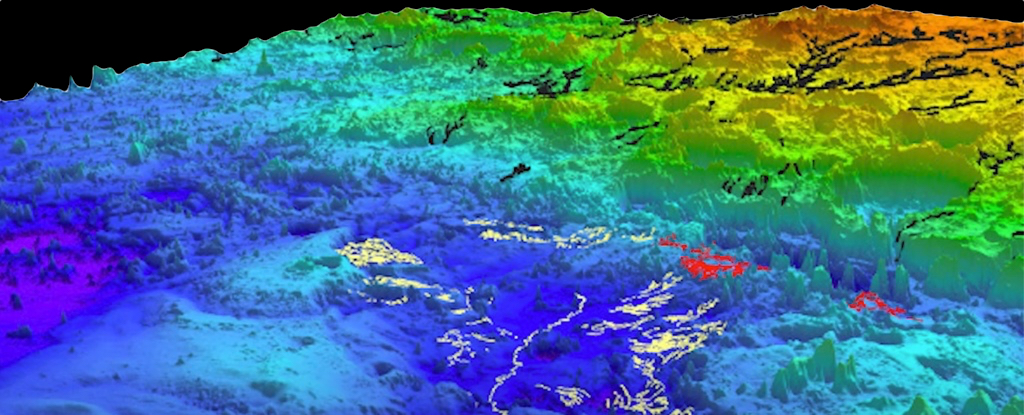Ancient traces of a giant ocean discovered on Mars

You're no doubt familiar with the dry, dusty appearance of Mars as it appears today - but scientists have found evidence that a vast ocean existed on the surface of the Red Planet some 3.5 billion years ago.
This evidence comes in the form of a distinctive topography of the beach, identified by numerous satellite images of the Martian surface. When these images are taken from slightly different angles, a terrain map can be created.
The researchers were able to map more than 6,500 km (4,039 miles) of river ridges, which appear to have been carved by rivers, indicating that they were likely eroded into river deltas or aqueduct belts (channels carved into the sea floor).
.
"The big, new thing that we've done in this paper is to think about Mars in terms of its stratigraphy and sedimentary record," says geologist Benjamin Cardenas, of Penn State University.
Using data from the Mars Reconnaissance Orbiter collected in 2007, the team applied an analysis of ridge thicknesses, angles and locations to understand the study area: the topographic depression known as the Aeolis Dorsa region on Mars.
It seems likely that a great deal of change has occurred in this part of the planet all those years ago, Cardenas explains. This is evidenced by evidence of large increases in sea level and rapid movement of rocks by rivers and currents.
Today, Aeolis Dorsa contains the most concentrated group of river ridges on Mars.

And all this is related to the search for life on Mars. One of the main questions that scientists are looking for with regard to the red planet is whether it has conditions hospitable enough to be able to support life.
“What immediately comes to mind as one of the main points here is that an ocean of this size means a higher potential for life,” Cardenas says. It also tells us about the ancient climate and its evolution. Based on these results, we know that there was a period when it was warm enough and the atmosphere was thick enough to support this much liquid water at one time.”
In a separate study published in Nature Geoscience, some of the same researchers applied the sonographic technique used to map ancient sea depths in the Gulf of Mexico as a model for how the surface of Mars was eroded by water.
There are vast swaths of what could be river edges all over Mars, and the simulations the team is running remarkably resemble the landscape on the Red Planet - suggesting extensive water coverage at one time in the past.
We're seeing more and more evidence that water was once plentiful on Mars, and work continues to see what that might lead to and where that water is now - although looking back billions of years isn't easy.
The research has been published in the Journal of Geophysical Research: Planets and Nature Geoscience.
Source: websites

